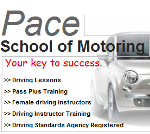Making safe decisions behind the wheel relies heavily on our eyesight. Approximately 90% of the decisions we make while driving are based on information acquired through the eyes. But as we age, our eyesight begins to deteriorate and becomes progressively worse.
The amount of light we need to drive roughly doubles every 13 years. To put this into perspective, a 60 year old requires 10 times as much light as an 18 year old to drive, and will take twice as long to adjust to changes in light and darkness. Our ability to focus quickly from near to far also declines. An example of this would be looking up from the speedometer to the road ahead. Younger drivers need only about two seconds to adjust their focus, whereas drivers over 40 may take three seconds or more. As we age, the amount of time needed to change focus steadily increases. This condition makes it more difficult to judge distances and speed.
As we age, the lenses of our eyes thicken, our pupils shrink, and we experience a loss of muscle elasticity in the eye area. All of this contributes to an increased sensitivity to light and glare. Sunlight or headlights from an oncoming vehicle may impede an older driver’s view. Just as we take longer to focus, a 55-year-old driver takes eight times as long to recover from glare than a 17-year-old driver.
In addition, colors (especially red) become harder to see. An older driver may take twice as long as a young driver to observe the brake lights of the vehicle in front of them.
Other eyesight concerns also affect our driving ability. Our peripheral vision narrows, our depth perception declines, and we may develop cataracts, glaucoma or macular degeneration. Depth perception is crucial in judging how fast other cars are moving and approaching you. Macular degeneration affects the central field of vision and usually results in the inability to drive.
To cope safely with a decline in vision, you must recognize your limitations and be aware of unsafe driving habits.
The following practices may help:
• Have regular eye exams – some eye problems can be corrected, especially if caught early.
• Avoid tinted windshields, and wear sunglasses when glare is a problem.
• If possible, avoid driving at night, during rush hours, and in inclement weather.
• Avoid wearing glasses that restrict your side vision.
• Avoid driving vehicles with large blind spots.
• Keep your headlights and windshield clean and properly maintained.
• Turn your head frequently to compensate for diminished peripheral vision.
• Look ahead to see trouble before you reach it.
• If you require glasses, wear them while driving.
Saturday, 20 February 2010
Subscribe to:
Post Comments (Atom)

It makes safety life.
ReplyDelete